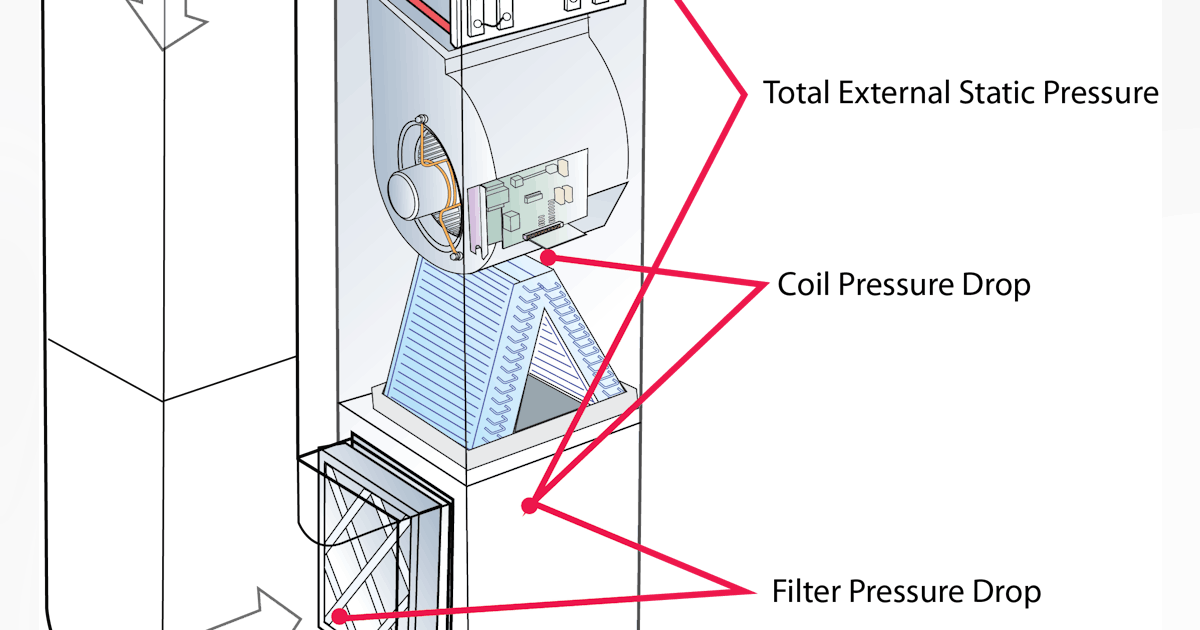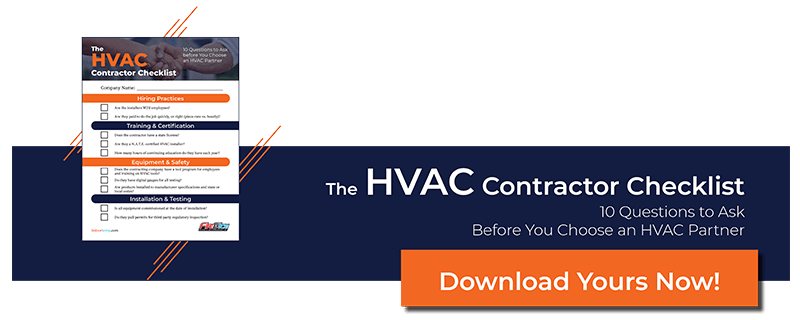As you continue down the table and compare measured pressures to pressure budgets, you’ll see the filter also has a much higher pressure drop than the budget. This is another area that needs further investigation to determine why the reading is so high.
The supply duct pressure measurement is much lower than the budget. That’s a great sign this side of the duct system is acceptable. But beware, because low pressures can also indicate disconnected supply ducts and leaks, so proceed with caution.
You’ll notice the coil pressure drop is missing from this information. Since the indoor coil in most air handlers is internal, there is no pressure budget. If you’re curious about a coil’s pressure drop, you can use a budget of .20 to .30 as a baseline value.
For more information about test locations, measurements, and static pressure budgets, please email me for NCI’s Static Pressure Quick Start Guide.
Pinpoint the Repairs
You can see in the readings above the return duct system and air filter need improvement. So, how do you pinpoint these repairs? Let the pressure readings guide you. Relieve the restrictions starting at the equipment and then work down the trunk ducts and branches towards the supply registers and return grilles.
Undersized and restrictive air filters are a common source of return air issues. One simple solution is to remove an undersized one-inch filter and install a correctly sized media filter. If your customer wants to keep the one-inch filter, install a larger filter size with more surface area to lower the pressure drop. While you’re at it, oversizing the return drop or plenum doesn’t hurt.
Many installations need more than air filter improvement to solve fan failure errors. You’ll need to look at the supply and return duct trunks. A simple way to locate restrictions is by measuring pressures across duct fittings or every four feet down the trunk. Look for the highest change in pressure because it’s probably the location of the airflow restriction. Common corrections include using less restrictive fittings, increasing duct sizes, or adding extra return or supply ducts.
There are some duct systems where the issues are not in the trunk but in the branch ducts. Often, simple improvements such as removing kinks, improving suspension, or removing excess flex duct and extra elbows make a big difference. However, some branch duct sizes must be increased starting at the takeoffs. You can also decrease resistance to airflow by choosing performance-grade supply registers and return grilles with low-pressure drops.
Email me for NCI’s Duct Sizing Tables and Quick Duct Capacity Check for more information about quick and simple retrofit duct sizing: ncilink.com/ContactMe.
Preventing Fan Failure Errors
Most installations suffering from fan failure errors will need additional duct repairs you didn’t include in the pricing. This situation can put you in a bad spot with the customer. So, how can you ensure you don’t inherit a flawed duct system in the future?
Start by measuring static pressure and fan airflow before you quote variable-capacity equipment. The best way I’ve seen to do this in retrofit situations is with a Digital TrueFlow Grid from The Energy Conservatory. This way, you can make any issues you find known to the homeowner before you own them. The TrueFlow app generates a report proving whether an existing duct system is acceptable or needs further work.
Most homeowners don’t know that older equipment tolerates poor duct systems. Newer equipment is more precise and has much tighter operating tolerances. It simply can’t handle poorly installed or undersized ducts. With some testing and planning, you can ensure you don’t get stuck guessing how to fix a fan failure error. If you have a problem with your job, I hope this article guides you in resolving the issue.
David Richardson serves the HVAC industry as vice president of training for National Comfort Institute, Inc. (NCI). NCI specializes in training focusing on improving, measuring, and verifying HVAC and building performance.
Whether you require installation, repair, or maintenance, our technicians will assist you with top-quality service at any time of the day or night. Take comfort in knowing your indoor air quality is the best it can be with MOE heating & cooling services Ontario's solution for heating, air conditioning, and ventilation that’s cooler than the rest.
Contact us to schedule a visit. Our qualified team of technicians, are always ready to help you and guide you for heating and cooling issues. Weather you want to replace an old furnace or install a brand new air conditioner, we are here to help you. Our main office is at Kitchener but we can service most of Ontario's cities
Source link




Add Comment